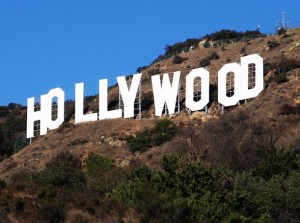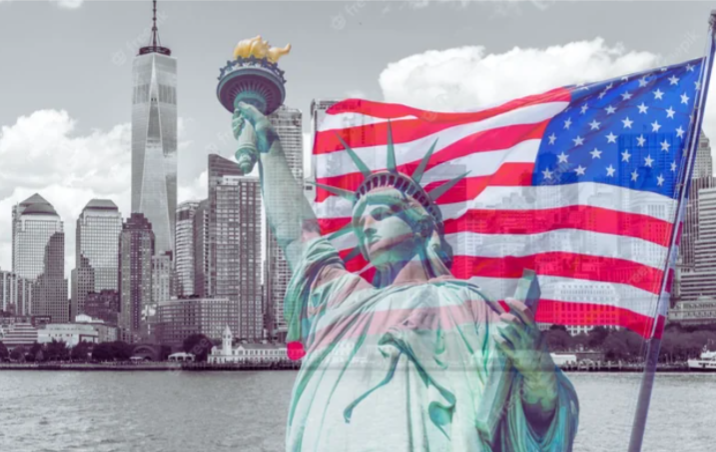(ThyBlackMan.com) CRAMMED into this year’s field of 10 best picture Oscar nominees are British aristocrats, Volvo-driving Los Angeles lesbians, a flock of swans, a gaggle of Harvard computer geeks, clans of Massachusetts fighters and Missouri meth dealers, as well as 19th-century bounty hunters, dream detectives and animated toys. It’s a fairly diverse selection in terms of genre, topic, sensibility, style and ambition. But it’s also more racially homogenous — more white — than the 10 films that were up for best picture in 1940, when Hattie McDaniel became the first black American to win an Oscar for her role as Mammy in “Gone With the Wind.” In view of recent history the whiteness of the 2011 Academy Awards is a little blinding.
Nine years ago, when Denzel Washington and Halle Berry won his and her Oscars — he was only the second African-American man to win best actor, and she was the first African-American woman to win best actress —  each took a moment to look back at the performers from earlier generations who had struggled against prejudice and fought to claim the recognition too often denied them.
each took a moment to look back at the performers from earlier generations who had struggled against prejudice and fought to claim the recognition too often denied them.
“This moment is so much bigger than me,” Ms. Berry said, before convulsing with sobs. “This moment is for Dorothy Dandridge, Lena Horne, Diahann Carroll.” When Mr. Washington took the stage, he praised God and then recognized another higher power, Sidney Poitier, who received an honorary Academy Award earlier that evening for helping to dismantle the color line in film.” “I’ll always be chasing you, Sidney,” Mr. Washington said, holding his Oscar toward Mr. Poitier, who had won his own best actor prize in 1964 for “The Lilies of the Field.” “I’ll always be following in your footsteps.”
Real change seemed to have come to movies or at least the Academy, which had given statuettes to a total of seven black actors in the previous 73 years. After Mr. Washington and Ms. Berry, there would be Jamie Foxx and Forest Whitaker (both best actors); Morgan Freeman (best supporting actor); Jennifer Hudson and Mo’Nique (best supporting actresses). The consolidation of a black presence in the movies and television did not signal the arrival of a postracial Hollywood any more than the election of Barack Obama in 2008 spelled the end of America’s 400-year-old racial drama. But it was possible, over much of the past decade, to believe that a few of the old demons of suspicion and exclusion might finally be laid to rest.
Are the coming Oscars an anomaly, or an unsettling sign of the times? The Academy, in any case, does not work in a vacuum. A look back at the American films of 2010 reveals fewer of the kinds of movies — biographies like “Ray” and urban dramas like “Training Day” — that have propelled black actors, screenwriters and directors into contention in the recent past. With a few exceptions, like the romance “Just Wright” and the ghetto farce “Lottery Ticket,” it was perhaps the whitest year for Hollywood since the post-Richard Pryor, pre-Spike Lee 1980s. The superhero, fantasy and action genres were drained of color. The urban dramas were set in Irish-American New England neighborhoods. Even the male-male buddy picture, a staple of interracial bonding since 1958, when Mr. Poitier and Tony Curtis were chained together in “The Defiant Ones,” has become a largely white-on-white affair.
The possibility that a new black independent film movement — or even a genuinely crossover cinema — would emerge in the wake of “Precious: Based on the Novel ‘Push’ by Sapphire,” now seems as remote as it did before this art-house phenomenon made its way, assisted by Oprah Winfrey and Tyler Perry, from the Sundance Film Festival to the Oscars. But while Ms. Winfrey and Mr. Perry, as executive producers, brought attention to this story of an abused black teenage girl, “Precious” now looks more like a one-off than a harbinger of change, much like another of last year’s nominees, “The Princess and the Frog,” the first Disney movie with a black princess. (The latest Disney princess, Rapunzel in “Tangled,” is as blond as Sleeping Beauty back in 1959.)
What happened? Is 2010 an exception to a general rule of growing diversity? Or has Hollywood, a supposed bastion of liberalism so eager in 2008 to help Mr. Obama make it to the White House, slid back into its old, timid ways? Can it be that the president’s status as the most visible and powerful African-American man in the world has inaugurated a new era of racial confusion — or perhaps a crisis in representation? Mr. Obama’s complex, seemingly contradictory identity as both a man (black, white, mixed) and a politician (right, left, center) have inspired puzzlement among his supporters who want him to be one thing and detractors who fear that he might be something else.
In their modest way American movies helped pave the way for the Obama presidency by popularizing and normalizing positive images of black masculinity. Actors like Mr. Poitier and Harry Belafonte made the leap, allowing black men to move beyond porters and pimps to play detectives, judges, the guy next door, the God upstairs and the decider in the Oval Office. At the same time, while the variety of roles increased, the commercially circumscribed representational conservatism of American cinema — with its genre prerogatives and appetite for uplift, its insistence on archetypes and stereotypes, villains and heroes — meant that these images tended to fit rather than break or bend the mold. Certainly this isn’t a cinema that jibes with what, in his 2007 memoir “Dreams From My Father,” Mr. Obama called “the fluid state of identity.”
The recognition of that fluidity, and the exploitation of it for creative and commercial ends, has, from the swing era through hip-hop, been much more the province of America’s popular music than its movies. Partly because movies remain a top-down, capital-intensive art form, they have been more cautious and apt to cater to rather than to subvert the perceived prejudices of the audience. In Hollywood race has often been a social problem to be earnestly addressed (and then set aside), or a marketing challenge. In the 1960s the studios congratulated themselves for making sober, correct-thinking dramas that often starred Mr. Poitier in films like “In the Heat of the Night” and “Guess Who’s Coming to Dinner,” both released in 1967 and which together reaped 17 Oscar nominations.
A few years later, when a new generation of actors and filmmakers emerged from the rubble of the old studio system, Mr. Poitier was no longer alone as African-Americans began to appear on screen and behind the camera to an unprecedented extent. Faces and voices that had once been found only in “race movies” or art-house films by the likes of Shirley Clarke (“The Cool World”) filtered into the mainstream. There were blaxploitation hits like “Shaft,” as well as crossover dramas (“Sounder”) and popular comedies, including the trilogy “Uptown Saturday Night,” “Let’s Do It Again” and “A Piece of the Action,” directed by Mr. Poitier and starring him and Bill Cosby. The independent world saw the emergence of off-Hollywood directors like Charles Burnett, Haile Gerima, Billy Woodberry and Julie Dash.
Race in American cinema has rarely been a matter of simple step-by-step progress. It has more often proceeded in fits and starts, with backlashes coming on the heels of breakthroughs, and periods of intense argument followed by uncomfortable silence. To that end, the 1980s were, with a few exceptions — or maybe just the exception of Eddie Murphy in “48 Hours,” Trading Places” and “Beverly Hills Cop” — marked as much by racial retrenchment as by the consolidation of the blockbuster mentality. More hopefully, the end of that decade ushered in a new generation of do-it-yourself black filmmakers, most famously and outspokenly Spike Lee, who tried to beat the system and then joined it.
Mr. Murphy, Mr. Lee and the African-American stars who ascended in the 1990s and the decade that followed — notably Will Smith, Morgan Freeman, Jamie Foxx and of course Mr. Washington — often had to shoulder the burden of representing their race even as they pursued their individual ambitions. For the most part, these stars rode to the top of the box office in stories that did not engage or address race, while the films that did take the subject on more directly — like “Ali” and “Dreamgirls” — often did so at a historical safe distance. It was almost as if, with the ascendancy of individual black movie stars, Hollywood no longer felt the need to tell stories about black people as a group.
This retreat from race by the big studios partly explains the emergence of a newly separate black cinema with its own stars (Morris Chestnut, Vivica A. Fox), auteurs (Ice Cube, Tyler Perry) and genres (including tales of buppie courtship like “Two Can Play That Game” and of neighborhood striving like the “Barbershop” franchise). Emerging from outside the mainstream and indie world, the prolific Mr. Perry has become one of the most successful directors and producers of any color. Last year he directed a much-maligned adaptation of Ntozake Shange’s “For Colored Girls Who Have Considered Suicide When the Rainbow Is Enuf.” Some complained that Mr. Perry had bowdlerized that’s famous feminist work, but he had made it his own, complete with melodramatic flourishes and divas like Janet Jackson.
Mr. Lee has been among Mr. Perry’s critics. “We’ve got a black president, and we’re going back,” Mr. Lee said in 2009. “The image is troubling, and it harkens back to Amos ’n’ Andy.” The philosopher Cornel West has been more charitable (“Brother Tyler can mature”) and last year he put a larger frame around the issue of race and the movies in America, noting that with “all the richness in black life right now,” that “the only thing Hollywood gives us is black pathology. Look at the Oscars. Even ‘Precious,’ with my dear sister Mo’Nique, what is it? Rape, violation, the marginalized. Or else you get white missionary attitudes toward black folk. ‘The Blind Side?’ Oh my God! In 2010? I respect Sandra Bullock’s work, but that is not art.”
“The Blind Side” might not have been art, but along with three other best picture nominees — “Precious,” “District 9” and “Avatar” — it did take on questions of black and white relations. At the center of “The Hurt Locker,” which won best picture, was the volatile friendship between two soldiers, a hot-headed white bomb-disposal specialist played by Jeremy Renner and his cautious black sergeant, played by Anthony Mackie. Race in that movie was not a theme or a problem to be solved, but rather a subtle, complex fact of life. These nominees suggested a range of approaches to a volatile subject, from allegory to melodrama to various kinds of realism.
Did filmmakers somehow exhaust the subject? Or has the cultural ground shifted and, with the economic crisis, made other kinds of stories feel more urgent? While it might be a stretch to yoke together the differently privileged milieus of “The King’s Speech,” “The Kids Are All Right” and “The Social Network,” it is hard to escape the impression that class made something of a comeback in 2010. “The Fighter” relates the story of working-class, boxing brothers from a former Massachusetts mill town. Set in the Ozarks, “Winter’s Bone” involves the violent, clannish world of crystal meth producers whose grandfathers likely ran moonshine. “The Town,” which brought Mr. Renner his second nomination in two years, depicts a similar milieu, but with Boston bank robbers.
So is class the new race? It may be tempting to think so, given the state of the economy and the political discourse, but the two have never really stood apart in American life. And the racial complexity of American life seems, at least at the moment, to have stymied the collective imagination of the movie industry. Perhaps this next year will bring more change we can believe in. For now, though, looking down the roster of the most popular movies released in 2010, only one seems capable of acknowledging, and making a story of the perfectly ordinary reality of a black man with a blue-collar job. That was Tony Scott’s “Unstoppable,” starring none other than Denzel Washington. The rest of Hollywood, it seems, will always be chasing him.
Written By MANOHLA DARGIS & A. O. SCOTT
Official website; http://www.NyTimes.com
















Leave a Reply